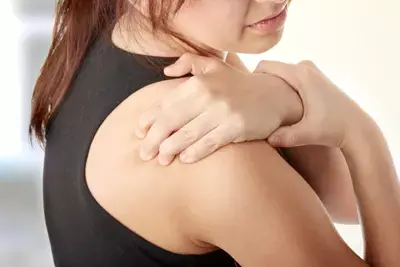- Home
- Medical news & Guidelines
- Anesthesiology
- Cardiology and CTVS
- Critical Care
- Dentistry
- Dermatology
- Diabetes and Endocrinology
- ENT
- Gastroenterology
- Medicine
- Nephrology
- Neurology
- Obstretics-Gynaecology
- Oncology
- Ophthalmology
- Orthopaedics
- Pediatrics-Neonatology
- Psychiatry
- Pulmonology
- Radiology
- Surgery
- Urology
- Laboratory Medicine
- Diet
- Nursing
- Paramedical
- Physiotherapy
- Health news
- Fact Check
- Bone Health Fact Check
- Brain Health Fact Check
- Cancer Related Fact Check
- Child Care Fact Check
- Dental and oral health fact check
- Diabetes and metabolic health fact check
- Diet and Nutrition Fact Check
- Eye and ENT Care Fact Check
- Fitness fact check
- Gut health fact check
- Heart health fact check
- Kidney health fact check
- Medical education fact check
- Men's health fact check
- Respiratory fact check
- Skin and hair care fact check
- Vaccine and Immunization fact check
- Women's health fact check
- AYUSH
- State News
- Andaman and Nicobar Islands
- Andhra Pradesh
- Arunachal Pradesh
- Assam
- Bihar
- Chandigarh
- Chattisgarh
- Dadra and Nagar Haveli
- Daman and Diu
- Delhi
- Goa
- Gujarat
- Haryana
- Himachal Pradesh
- Jammu & Kashmir
- Jharkhand
- Karnataka
- Kerala
- Ladakh
- Lakshadweep
- Madhya Pradesh
- Maharashtra
- Manipur
- Meghalaya
- Mizoram
- Nagaland
- Odisha
- Puducherry
- Punjab
- Rajasthan
- Sikkim
- Tamil Nadu
- Telangana
- Tripura
- Uttar Pradesh
- Uttrakhand
- West Bengal
- Medical Education
- Industry
Greater Displacement in AC Joint Dislocations Linked to Poorer Postoperative Outcomes: Study

Yuqin Fang et al conducted a study to evaluate risk factors and clinical outcomes in patients with reduction loss after acromioclavicular joint dislocation treated with the Endobutton device and to develop a nomogram prediction model.
The authors conducted a retrospective examination of the medical records of 250 patients who had undergone ligament reconstruction using the Endobutton device. Univariate and multivariate logistic regression analyses were utilized to identify the risk factors. Subsequently, a nomogram model was constructed to forecast the probability of reduction loss. The model’s discrimination and calibration were assessed using a calibration plot, receiver operating characteristic, and decision plot. To evaluate the clinical outcomes of patients experiencing reduction loss, both the Visual Analogue Scale (VAS) score and Constant score were assessed both preoperatively and at the final follow-up.
The key findings of the study were:
• Reduction loss occurred in 25.6% (64/250) of enrolled patients during the study period.
• In the multivariate logistic regression analysis, independent risk factors for postoperative reduction loss were identified, including the conoid tunnel ratio (P = 0.002), trapezoid tunnel ratio (P = 0.009), coracoid button position (P < 0.001), additional pin fixation (P < 0.001), and weight-bearing time (P < 0.001).
• The contour map demonstrated a predictive accuracy of 0.896 in assessing the risk of reduction loss.
• Patients with displacement exceeding 100% of the thickness of the distal clavicle exhibited significantly worse results at the final follow-up in terms of the VAS score (P < 0.001), Constant score (P < 0.001), and subjective outcomes (P < 0.001).
The authors opined – “In conclusion, patients with displacement greater than 100% of the thickness of the distal clavicle had poorer postoperative clinical outcomes. Further surgical intervention may be needed for this group of patients. For patients with less than or equal to 100% displacement of the thickness of the distal clavicle, no special treatment was required. We found a correlation between reduction loss and tunnel malposition, no additional pin fixation and premature weight-bearing of the affected limb (< 5 weeks). Our nomogram helped to identify high-risk patients and provide them with close follow-up and even surgical intervention to reduce the rate of reduction loss. It also provided us with guidance on surgical treatment for such injuries in the future.”
MBBS, Dip. Ortho, DNB ortho, MNAMS
Dr Supreeth D R (MBBS, Dip. Ortho, DNB ortho, MNAMS) is a practicing orthopedician with interest in medical research and publishing articles. He completed MBBS from mysore medical college, dip ortho from Trivandrum medical college and sec. DNB from Manipal Hospital, Bengaluru. He has expirence of 7years in the field of orthopedics. He has presented scientific papers & posters in various state, national and international conferences. His interest in writing articles lead the way to join medical dialogues. He can be contacted at editorial@medicaldialogues.in.


